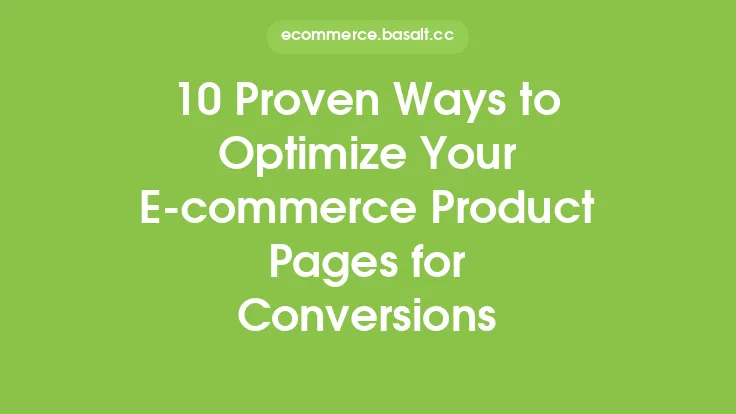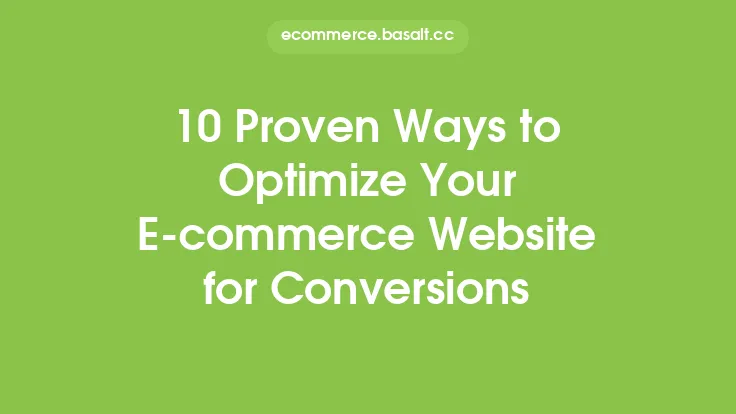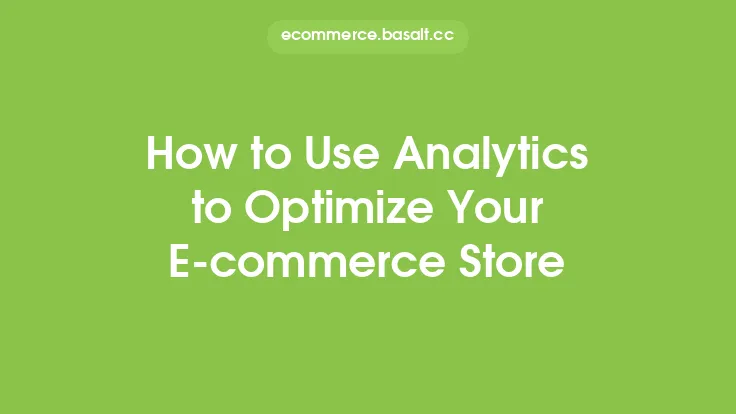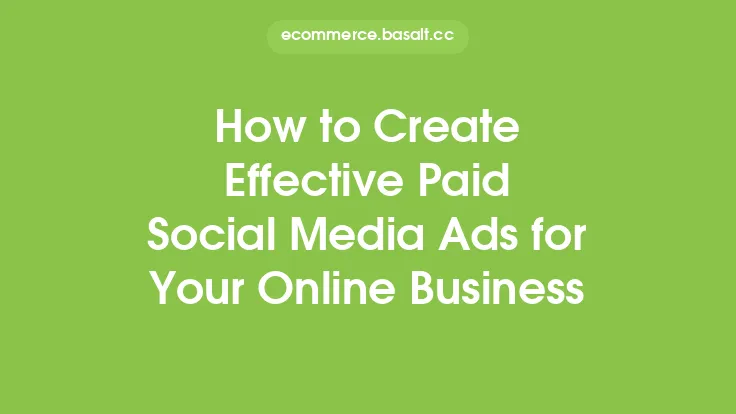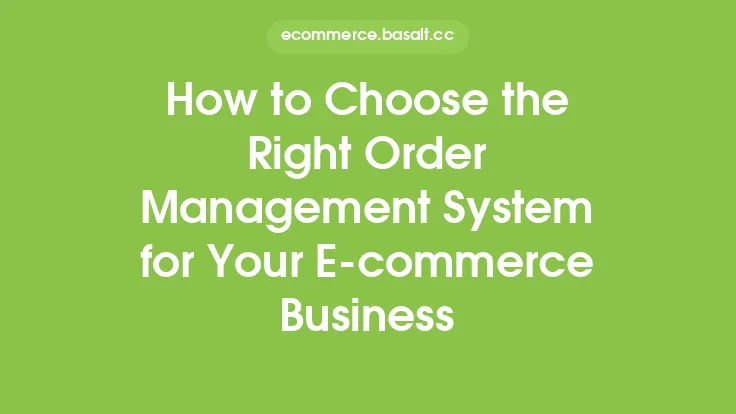Optimizing product pages for search engines is a crucial aspect of e-commerce marketing, as it can significantly impact the visibility and conversion rates of your online store. A well-optimized product page can help your products rank higher in search engine results pages (SERPs), driving more organic traffic and sales to your website. In this article, we will delve into the evergreen strategies and best practices for optimizing your product pages for search engines.
Understanding the Importance of Product Page Optimization
Product page optimization is essential for e-commerce businesses, as it can help increase the visibility of your products in search engine results. When a customer searches for a product, the search engine's algorithm analyzes various factors to determine the relevance and authority of your product page. By optimizing your product pages, you can improve your chances of ranking higher in SERPs, driving more traffic and sales to your website. Additionally, optimizing product pages can also improve the user experience, making it easier for customers to find and purchase the products they are looking for.
Keyword Research and Optimization
Keyword research is a critical step in optimizing product pages for search engines. You need to identify the most relevant and high-traffic keywords that customers use to search for your products. Use tools like Google Keyword Planner, Ahrefs, or SEMrush to conduct keyword research and analyze your competitors' keyword strategies. Once you have identified the target keywords, optimize your product page elements, such as the title tag, meta description, headings, and product description, to include the target keywords. However, make sure to use keywords naturally and avoid keyword stuffing, as it can negatively impact your search engine rankings.
Optimizing Product Page Elements
Optimizing product page elements is crucial for search engine rankings and user experience. The following are some of the key elements to optimize:
- Title Tag: The title tag is the most important element on your product page, as it tells search engines what your page is about. Make sure to include the target keyword and keep it concise and descriptive.
- Meta Description: The meta description is a short summary of your product page and should include the target keyword. It should be compelling and descriptive, as it can impact click-through rates.
- Headings: Headings help structure your content and highlight important keywords. Use H1, H2, and H3 headings to break up your content and include target keywords.
- Product Description: The product description should be detailed and include target keywords. However, make sure to write for the user, not just for search engines.
- Product Images: Product images are essential for e-commerce product pages. Optimize your images by including target keywords in the file name, alt tag, and description.
Content Quality and Uniqueness
High-quality and unique content is essential for product page optimization. Your product descriptions should be detailed, informative, and engaging, providing customers with all the information they need to make a purchasing decision. Avoid duplicating content from other websites or using generic product descriptions provided by manufacturers. Instead, create unique and compelling content that showcases your products' features, benefits, and unique selling points.
Mobile-Friendliness and Page Speed
Mobile-friendliness and page speed are critical factors in product page optimization. With most customers shopping on their mobile devices, it's essential to ensure that your product pages are mobile-friendly and provide a seamless user experience. Use responsive design to ensure that your product pages adapt to different screen sizes and devices. Additionally, page speed is crucial, as slow-loading pages can negatively impact user experience and search engine rankings. Use tools like Google PageSpeed Insights to analyze your page speed and optimize your product pages for faster loading times.
Internal Linking and Navigation
Internal linking and navigation are essential for product page optimization, as they help search engines understand your website's structure and content hierarchy. Use clear and descriptive navigation menus to help customers find related products and categories. Additionally, use internal linking to link to related products, categories, and content, such as blog posts or reviews. This can help improve user experience, increase average order value, and reduce bounce rates.
Product Page Schema Markup
Product page schema markup is a type of microdata that helps search engines understand your product page content and provides additional information to customers. Use schema markup to highlight important product information, such as price, availability, and reviews. This can help improve your search engine rankings and increase click-through rates. Use tools like Google's Structured Data Markup Helper to add schema markup to your product pages.
Tracking and Analyzing Performance
Tracking and analyzing performance is essential for product page optimization, as it helps you understand what's working and what's not. Use tools like Google Analytics to track key metrics, such as traffic, conversion rates, and average order value. Analyze your data to identify areas for improvement and make data-driven decisions to optimize your product pages. Additionally, use A/B testing and experimentation to test different product page elements and optimize for better performance.
Best Practices and Common Mistakes
When optimizing product pages, there are several best practices and common mistakes to avoid. Some of the best practices include:
- Use high-quality and unique content
- Optimize for mobile-friendliness and page speed
- Use internal linking and navigation
- Use schema markup to highlight important product information
Common mistakes to avoid include:
- Keyword stuffing and over-optimization
- Duplicating content from other websites
- Using generic product descriptions
- Ignoring mobile-friendliness and page speed
By following these evergreen strategies and best practices, you can optimize your product pages for search engines and improve your e-commerce website's visibility, traffic, and conversion rates. Remember to track and analyze your performance, and make data-driven decisions to continuously improve your product page optimization efforts.
